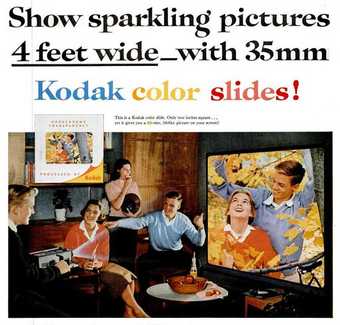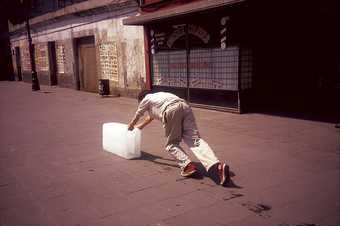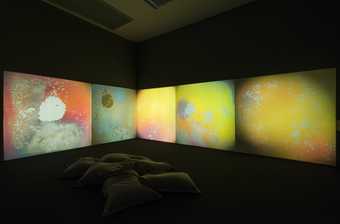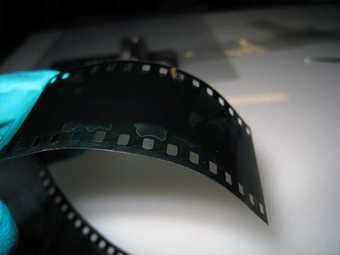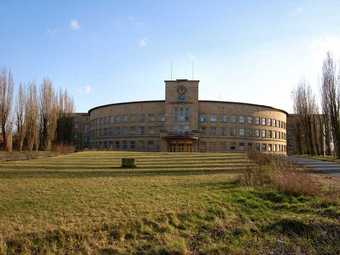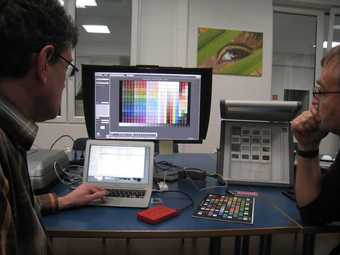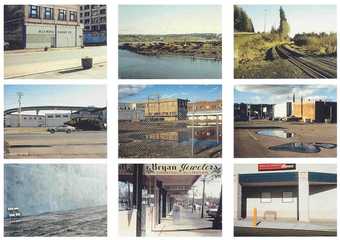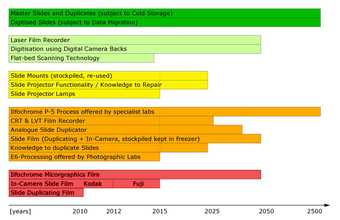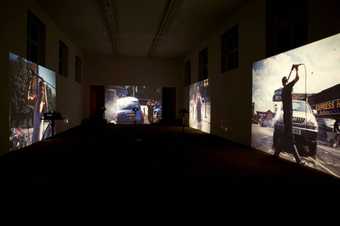While 35 mm slide transparencies are a medium in their own right, they are also an interesting hybrid, lying between still photography and motion picture technology. The use of 35 mm slides became commonplace in the 1960s; they were used to present images everywhere from the classroom to corporate and domestic environments. However, from the late 1990s onwards this medium has slowly been replaced by digital images, with the term ‘slide’ acting as a metaphor within presentation software packages such as Powerpoint.
Since the 1960s, a number of contemporary artists have adopted 35 mm slides for use as an artistic medium – attracted to them either because the technology was readily available, or because of their specific aesthetic qualities. Many artists also valued the sculptural aspects of the visible apparatus, and the impact this has on the experience of the work. In addition, a carousel slide projector creates a unique soundscape, with the whirr of the fan and the click of the motor as the carousel rotates and alternates the slides. Among the artists associated strongly with 35 mm slides are James Coleman, Francis Alÿs, Hilary Lloyd, Lothar Baumgarten and Nan Goldin.

Marc Camille Chaimowicz
Partial Eclipse 1980–2006
Installation view
Tate
© Marc Camille Chaimowicz
When slides are projected, they deteriorate owing to light, heat, dust and mechanical wear. Therefore they require constant replacement while on display. The demands of a contemporary art museum are unlike those of an archive. Within the contemporary art museum, successful custodianship must respond to the imperative for display. With slide sets needing to be changed roughly every six weeks, a large number of duplicate slides needs to be provided for every slide-based work. At a gallery such as Tate Modern works are often on display for at least a year.
With the demise of the photographic skills needed to duplicate slides, along with the discontinuation of slide stock and the end of the manufacture of slide projectors and related equipment, our ability to continue to display and enjoy these works in the future is brought into question. This project will explore strategies in response to this changing environment.
Project aims
This project aims to:
- Survey current practice among those engaged in the conservation of slide-based artworks.
- Explore long-term archiving strategies.
- Build consensus among different stakeholders around the significant properties of slide-based artworks, for example the specific aesthetic qualities of analogue duplicates.
- Analyse the impact of different approaches on the appearance of the work.
- Bring together the expertise of colour scientists and the practical needs and experience of those working for the care and management of slide-based artworks within a museum environment.
- Review the timescale for the shift to the digital and explore the potential for maintaining niche analogue production and infrastructure.
- Assess the scale of demand from the museum community for slide duplicating stock.
- Share the results of the project with professionals in the field.
The ultimate aim of this project is to share the lessons learnt with other professionals in the field who are interested in keeping slide-based works of art displayable so that they can be experienced by future generations. The project also aims to raise awareness of what will be lost if digital technology completely eclipses the analogue tradition.
The independent steering committee for this project consists of experts from varying fields including scientists, artists, photographers, conservators and representatives from industry who are engaged in this area of research.
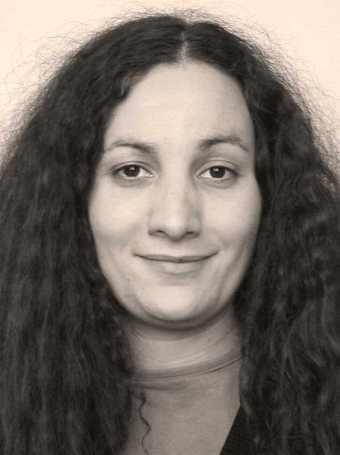
Tina Weidner, time-based media conservator and researcher for the Dying Technologies research project
Researcher biography
Tina Weidner, one of Tate’s conservators for time-based media artworks, works as part of the Time-based Media team, consisting of three conservators and five technicians. Their main activities are grouped around acquisition, collections care and exhibitions and displays.
Between June 2011–November 2012, Tina Weidner was seconded into the Tate Research department to look into the future of slide-based artworks in the Tate collection.

